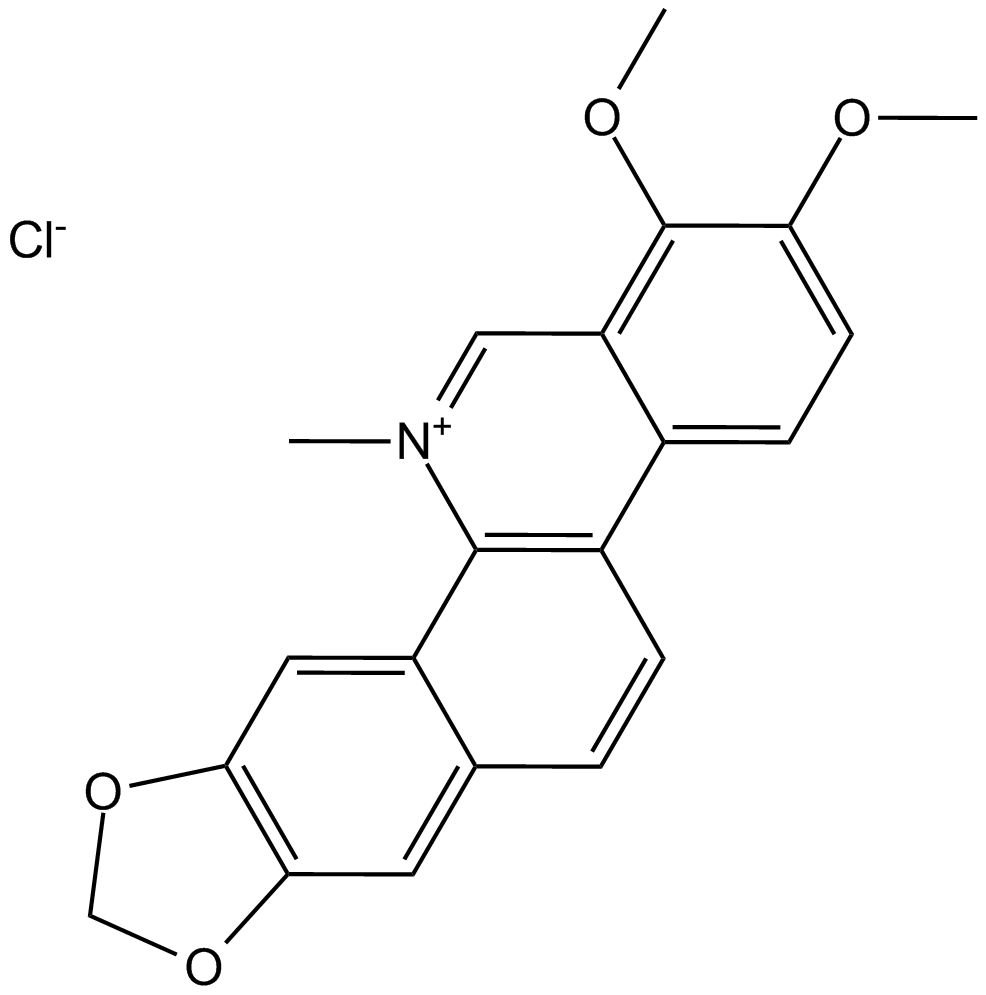Chelerythrine Chloride (Synonyms: Broussonpapyrine chloride, NSC 646662) |
| Catalog No.GC13065 |
Potent inhibitor of PKC and Bcl-xL
Products are for research use only. Not for human use. We do not sell to patients.

Cas No.: 3895-92-9
Sample solution is provided at 25 µL, 10mM.
Chelerythrine is a potent, selective antagonist of PKC (protein kinase C) with IC50 value of 0.66 μM.[1]
The alkaloid chelerythrine is a highly specific inhibitor that acts at the regulatory domain of the kinase.[2] It is also a competitive inhibitor with respect to the phosphate acceptor and a non-competitive inhibitor with respect to ATP.[1] Chelerythrine induced a dose-dependent decrease in the cell viability with IC50 value of 2.6 μM measured by MTT reduction assay.[3] Chelerythrine is also a selective and strong inhibitor of Bcl-xL functions and induced cell death in MEF cells with IC50 value of 1.1 μM.[4] Chelerythrine activated MEKK1- and MKK4-dependent JNK1 and p38 pathways then mediated the induction of apoptosis.[5] Chelerythrine stimulated apoptosis in the in vivo rat experiments (5 mg/kg) by inducing the generation of reactive oxygen species.[6] Chelerythrine also has widespread physiological effects on primarily antimicrobial and anti-inflammatory.
References:
1. J. M. Herbert, J. M. Augereau, J. Gleye and J. P. Maffrand, Biochem Biophys Res Commun 1990, 172, 993-999.
2. W. D. Jarvis, A. J. Turner, L. F. Povirk, R. S. Traylor and S. Grant, Cancer Res 1994, 54, 1707-1714.
3. J. Vrba, P. Dolezel, J. Vicar, M. Modriansky and J. Ulrichova, Toxicol In Vitro 2008, 22, 1008-1017.
4. M. Vogler, K. Weber, D. Dinsdale, I. Schmitz, K. Schulze-Osthoff, M. J. Dyer and G. M. Cohen, Cell Death Differ 2009, 16, 1030-1039.
5. R. Yu, S. Mandlekar, T. H. Tan and A. N. Kong, J Biol Chem 2000, 275, 9612-9619.
6. S. Yamamoto, K. Seta, C. Morisco, S. F. Vatner and J. Sadoshima, J Mol Cell Cardiol 2001, 33, 1829-1848.
Average Rating: 5 (Based on Reviews and 30 reference(s) in Google Scholar.)
GLPBIO products are for RESEARCH USE ONLY. Please make sure your review or question is research based.
Required fields are marked with *




















